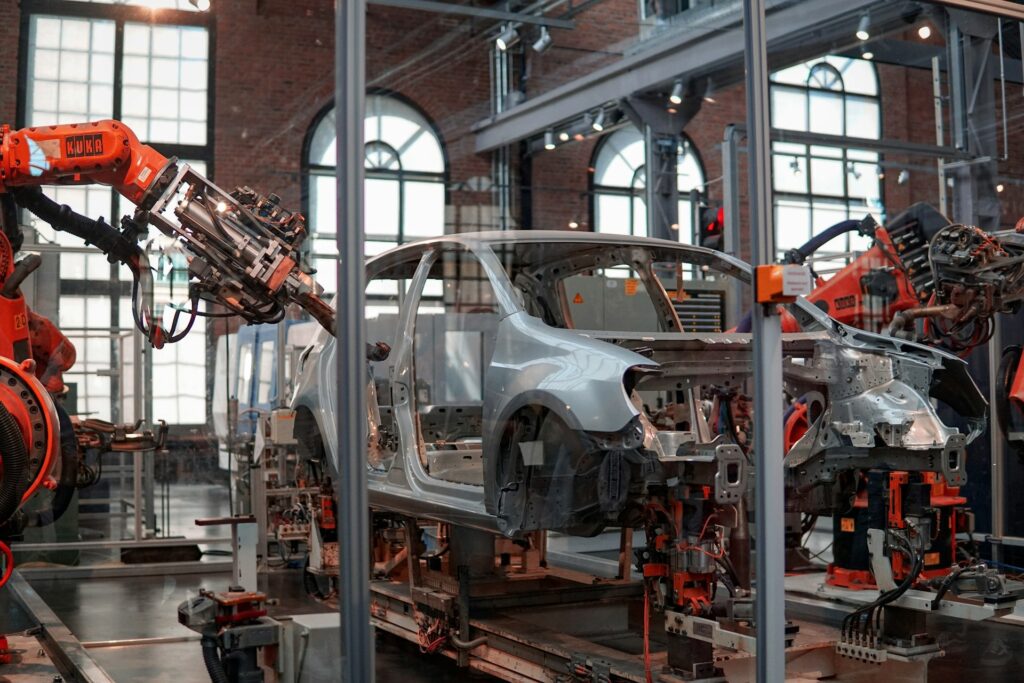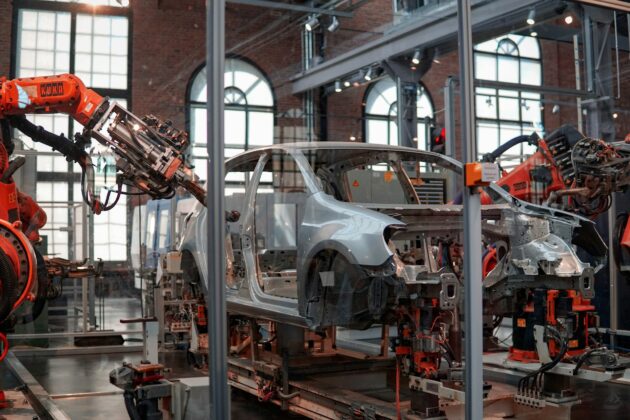
So what is the latest trend transforming automotive manufacturing as we speak?
It’s not a new AI-guided engine or an automated welding robot.
It’s something far simpler that most people don’t even notice:
UHMW tape.
Here’s the deal…
Ultra high molecular weight polyethylene tape is quietly taking over automotive manufacturing as we speak. And if you have anything to do with automotive manufacturing, you had better know exactly why this simple yet revolutionary material is displacing decades of established practice in how vehicles are built today.
Table of Contents
In this article we will cover:
- Why UHMW Tape Is Taking Over Automotive Manufacturing
- The Key Applications Driving Industry Adoption
- How UHMW Tape Solves Critical Manufacturing Problems
- Choosing the Right UHMW Solutions for Your Applications
Why UHMW Tape Is Taking Over Automotive Manufacturing
The fact is, automotive manufacturing has problems. Lots of them.
Engineers want to reduce vehicle weight while maintaining strength. They need components that can withstand high and low temperatures, chemicals, oils, and constant vibration. All these things need to work quickly and reliably on production lines and still keep material costs down.
Old-school solutions like metal fasteners, gaskets, rubber seals, traditional plastics – they all fall short.
Enter UHMW tape.
UHMW tape is not your average office tape or duct tape. UHMW tape offers automotive engineers a unique combination of properties:
- Ultra-low friction coefficient – minimizes noise and wear
- Exceptional chemical resistance – resists oils, fuels, cleaners
- High impact strength – maintains performance under vibration and shock loads
- Temperature stability – operates in extreme cold and heat
But here’s what really counts…
Look at the numbers, they don’t lie. Automotive applications are already 30% of the total UHMW tape market. That’s a huge piece of an already rapidly growing market.
So why?
Because automotive engineers are starting to figure out the crazy amount of problems UHMW tape can solve.
The Key Applications Driving Industry Adoption
Ok let’s dive into the details. Here’s exactly where UHMW tape is being used most often in automotive manufacturing right now.
Noise and Vibration Control
Do you know why modern cars and trucks are so much quieter than cars 20 years ago?
The answer is advanced sound dampening materials like UHMW tape. Specifically, engineers are applying it to:
- Door panels to prevent rattles
- Dash and trim components to eliminate squeaks
- Engine compartment parts to damp vibrations
- Trunk and hood areas to stop metal-on-metal contact
UHMW tape has an ultra-smooth surface that provides ideal damping properties for these applications. It’s also far quicker and easier to apply than traditional sound deadening materials.
Wire Harness Protection
Vehicles have miles of wires running through them these days. All that wire harnessing requires protection from:
- Abrasion from metal edges
- Heat from engine, exhaust systems
- Chemicals and fluids
- Vibrations that cause metal fatigue
UHMW tape provides a thin, flexible, yet incredibly durable protective barrier. The tape is easily wrapped around wire harnesses and will not move once applied even under extreme conditions.
Component Interface Applications
This is where it gets really interesting…
UHMW tape is increasingly being used as an interface material between moving parts. This includes sliding mechanisms, adjusters, and pivot points.
The self-lubricating properties of UHMW tape have solved the grease-on-moving-parts problem. Lubricants get dirty and must be reapplied. For manufacturers exploring the various UHMW tape options available for these critical applications, finding the right thickness and adhesive system is essential.
Weight Reduction Initiatives
Did you know every gram counts in vehicle design?
As the US Department of Energy points out, a 10% reduction in vehicle weight can increase fuel economy by 6-8%.
UHMW tape helps with weight reduction efforts in many ways:
- Replacing heavier metal components
- Eliminating liquid lubricants
- Allows for thinner multi-layer assemblies
- Enables lighter designs overall with improved material properties
How UHMW Tape Solves Critical Manufacturing Problems
Automotive manufacturing is hard. The materials and processes must work reliably every time. UHMW tape is a key part of solving several major automotive manufacturing challenges.
Production Line Speed
Assembly line time is money. The faster production line times, the lower the cost per vehicle.
Traditional fasteners such as screws, rivets, welds take time to install. Applications of UHMW tape can be fully automated and applied in a fraction of the time.
Quality Consistency
Humans make mistakes. Automating UHMW tape applications to the extent possible means consistent results each time. Manual application of screws, bolts, and adhesives introduce more variability and quality issues.
Multi-Material Bonding
Vehicles are made of a lot of different materials: steel, aluminum, carbon fiber, composites, various plastics.
Trying to make these different materials work together reliably has always been difficult.
UHMW tape has adhesive backing that works with almost any substrate material. There’s no need for special surface prep like with welding or special coating processes with compatibility concerns.
Maintenance Reduction
Parts that rub together wear out. Parts that stick together fail.
UHMW tape self-lubricating properties mean far less wear and tear and reduction in maintenance required over time on automotive components.
Choosing the Right UHMW Solutions for Your Applications
All UHMW tapes are not created equal. When selecting the right UHMW tape for your automotive manufacturing application, consider the following.
Thickness Requirements
Thicker tapes are more impact resistant. Thin tapes can fit into smaller spaces. Automotive applications tend to range from 2-10 mils.
Adhesive System
Tape adhesives need to match the application:
- Acrylic for general purpose
- Rubber for high tack
- Silicone for extreme temps
Surface Preparation
No matter how good the UHMW tape, the application surface must be properly prepared. All surfaces must be clean and dry.
Making the Investment Decision
Automotive manufacturing moves quickly. What’s cutting edge now becomes standard in a few years.
UHMW tape is not just a materials decision. It’s a strategic business decision. Companies that invest in UHMW tape and get it right now will gain advantages in production efficiency, part performance, cost savings, and innovation.
Plus here’s the kicker…
Learning curve for UHMW tape application is relatively low. Unlike a new manufacturing process that may take years of development to master, UHMW tape applications can be implemented and optimized in a much shorter timeframe.
Final Thoughts on Implementation
Understanding the use of UHMW tape in automotive manufacturing is understanding a major paradigm shift.
Automotive manufacturing is moving from mechanical fastening solutions to advanced materials applications.
It’s not about jumping on the latest trend. It’s about not being left behind.
Manufacturers who ignore these materials innovation are putting themselves at a disadvantage against competitors who embrace and master the new technologies.
The question is not whether UHMW tape will become a standard automotive manufacturing material. The question is: will you be an early adopter or a late follower?
The choice is yours.
But keep in mind… in an industry where milliseconds of time matter on the production line and every gram of weight matters in the final product, every little bit of advantage adds up.
Manufacturers that get this are the ones making the switch now.
